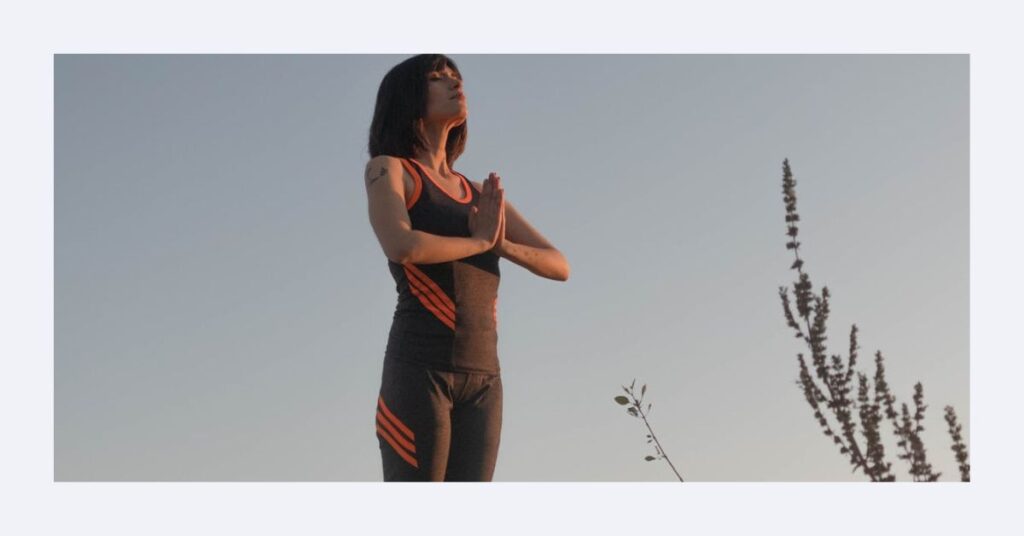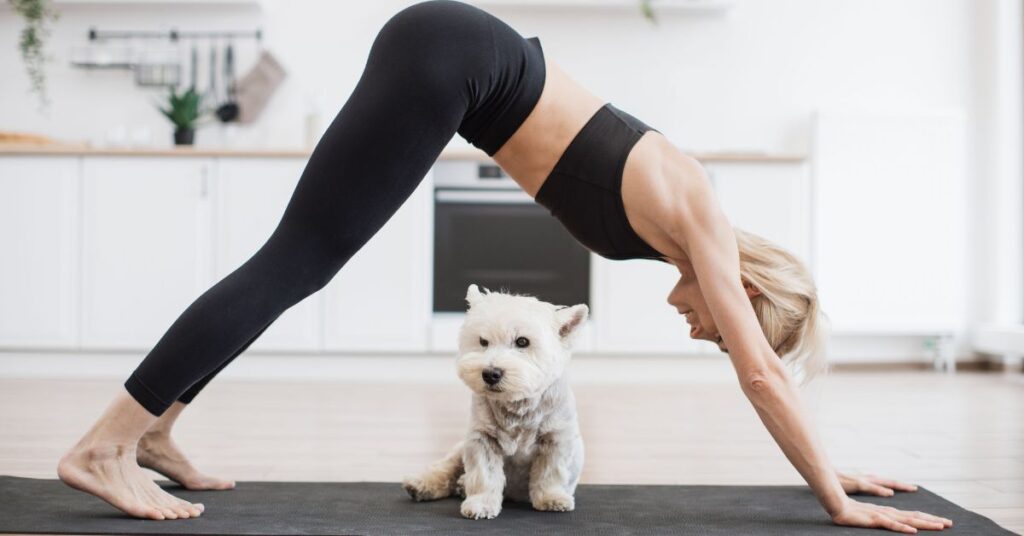When it comes to yoga, some poses can intimidate even the most devoted practitioners. These asanas often appear complex and physically demanding, serving as the poster children for flexibility and strength. But what if I told you that the world of yoga is full of illusions? That’s right—some yoga poses that look hard are actually quite easy to master. In this enlightening guide, we’ll delve into the deceptively challenging poses that are within reach for even beginner yogis.
The Illusion of Complexity
Why Some Poses Appear More Difficult Than They Are
The first thing to consider is visual complexity. Often, a pose looks intricate due to the angles and shapes the body makes. However, these forms can be deceptive. Many such positions rely on balance and technique rather than brute strength or extreme flexibility.
Sponsored Ads
The Role of Flexibility and Strength in Appearances
When we look at a yoga pose, we instinctively analyze it in terms of our own body’s capabilities. For example, a backbend might seem impossible to someone with a stiff spine, or a balancing pose may look challenging to those who have never attempted to stabilize themselves on one foot. But the fact is that many such “complex” poses can be achieved by learning the correct alignment, body positioning, and weight distribution, irrespective of how strong or flexible you may initially be.
So, don’t let the illusion of complexity deter you. With the right approach and understanding, you’ll find that many yoga poses that look hard are easy to incorporate into your practice.
Sponsored Ads
Beginner-Friendly Yet Impressive Poses
Let’s demystify some yoga poses that often look complex but are surprisingly accessible. Each of these poses offers a blend of visual flair and physical benefits, making them perfect for yogis who want to elevate their practice without necessarily elevating their risk.
Crow Pose (Bakasana)
- Visual Complexity: At first glance, Crow Pose looks like it demands an enormous amount of arm strength as you balance your entire body on your hands.
- Reality Check: What’s often overlooked is the role of core strength and weight distribution. Your arms aren’t doing all the lifting; your core plays a significant part. Once you understand how to engage your core and distribute your weight properly, the pose becomes much more attainable.
- How to Master: Start by squatting low and placing your hands flat on the mat. Spread your knees and lean forward, engaging your core as you lift your feet off the ground one at a time. With practice, you’ll find the sweet spot where balance kicks in.
King Pigeon Pose (Eka Pada Rajakapotasana)
- Visual Complexity: The pose appears to require extreme back flexibility and hip openness, with one leg bent backward towards the head.
- Reality Check: While flexibility helps, the key is in the preparation and setup, allowing you to ease into the position gradually.
- How to Master: Begin with a simpler pigeon pose, focusing on hip flexibility. As you get comfortable, you can start introducing the backbend and working your foot towards your head. Using a strap for assistance can make this pose much more accessible.
Camel Pose (Ustrasana)
- Visual Complexity: With the back arched and hands reaching for the heels, this pose seems like it’s designed for the hyper-flexible.
- Reality Check: Actually, Camel Pose is more about spinal extension than anything else. If you distribute the curve of the back evenly, you won’t feel as much pressure on the lumbar spine as you might think.
- How to Master: Kneel on your mat and place your hands on your hips. Push your hips forward and initiate a backbend from the upper back, reaching for your heels only when you feel an even bend along your spine.
These poses might seem like they belong on the covers of yoga magazines, meant only for the super-flexible or incredibly strong. However, as we’ve shown, they are within reach for most practitioners willing to approach them mindfully.
Sponsored Ads
Mastering the Basics
Before attempting these eye-catching poses, it’s crucial to have a solid foundation in basic yoga postures and alignments. Often, the simplicity of the basics can prepare you for the complexities of more advanced poses.
The Importance of Alignment
- Proper Form: Poor alignment not only decreases the effectiveness of your yoga practice but can also lead to injuries. Make sure you understand the fundamentals of each pose by either studying under a skilled instructor or using reputable online resources.
- Progressive Learning: Don’t skip to advanced poses without mastering simpler ones. For instance, before attempting Crow Pose, ensure you are comfortable with poses that build arm strength like Plank Pose and Chaturanga.
Core Strength
In yoga, your core is the epicenter of all movements and postures. Having a strong core can remarkably ease the transition into poses that look difficult but are easy, such as Bakasana.
Sponsored Ads
Strengthening Exercises: Include core-focused poses like Boat Pose and Forearm Plank in your regular practice to build abdominal muscles and enhance your balance and stability.
Safety First
While it’s tempting to dive right into poses that look like they belong in a yoga photo shoot, it’s vital to prioritize safety. No Instagram-worthy pose is worth an injury.
Sponsored Ads
- Warm-Up Properly: Always start your practice with a thorough warm-up. This could include some gentle stretches and a few rounds of Sun Salutations to prepare your muscles for more complex postures.
- Listen to Your Body: Yoga should never be painful. If you experience pain in any pose, it’s a clear sign to ease out of it. Using props like straps or blocks can also help make a pose more accessible and reduce the risk of straining.
- Consult Professionals: If you have existing injuries or health conditions, consult a healthcare provider before attempting new poses, especially those that are complex or strenuous.
Remember, the journey of yoga is individual. What’s easy for one may be challenging for another, and that’s completely okay. Always prioritize alignment and safety as you explore poses that look hard but are easy, and enjoy the process of evolving in your practice.
Poses with Benefits
Unpacking the advantages of mastering poses that look hard but are relatively easy helps to explain why they’re worth your time and effort.
Physical Advantages
- Strength and Flexibility: Though they may look daunting, these poses often help build muscle strength and increase flexibility. For instance, the Camel Pose might look intimidating but actually does wonders for your back and shoulders.
- Stress Relief: Achieving a pose you initially thought was complicated can be incredibly liberating, triggering the release of endorphins that alleviate stress.
Mental Benefits
- Confidence Boost: Successfully executing a challenging-looking pose can be a huge confidence booster.
- Mindfulness: These poses require intense focus and breath coordination, making you more present and mindful.
Mind Over Matter
In yoga, the physical body is only one part of the equation. Understanding the mental aspect is equally important for poses that appear complicated.
- Visualization: Before getting into any pose, visualize yourself successfully achieving it. Positive imagery not only boosts your confidence but also helps your body align itself into the pose more naturally.
- Breathwork: Mastering your breathing is essential in executing yoga poses effortlessly. Breathing techniques, such as Ujjayi Breath, can help you maintain composure and stability.
Conclusion
Mastering yoga poses that look hard but are actually easy is a journey that brings numerous physical and mental benefits. It enhances your muscle strength, flexibility, and most importantly, builds your confidence and mindfulness. Remember, the key to unlocking these ‘hard-looking’ poses lies in mastering the basics and keeping safety at the forefront. No pose is too complex if approached with the right preparation, focus, and a dash of courage. Namaste.



